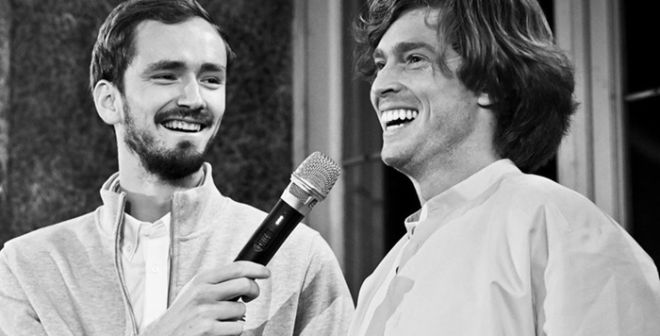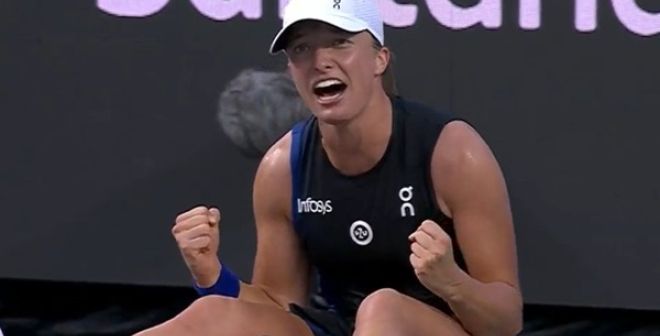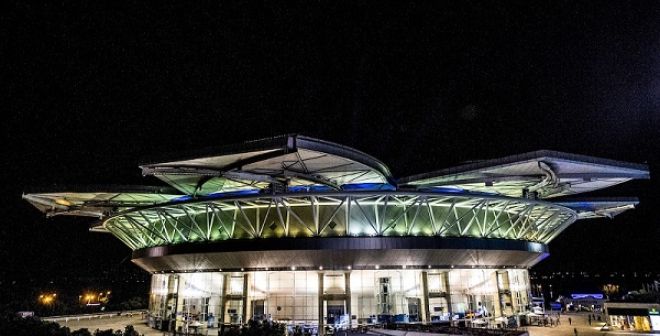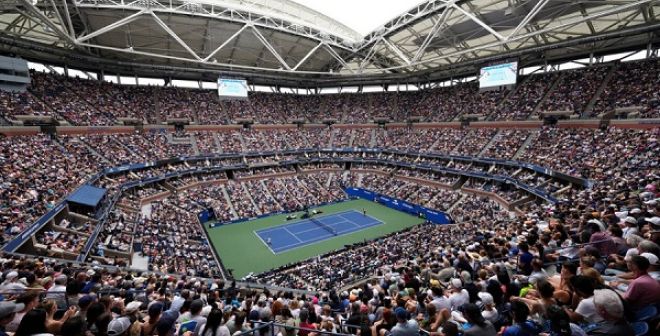For their first entry in the ATP World Tour Finals, Gaël Monfils and Dominic Thiem tried their best but won't overtake those who, before them, have proved that winning the Masters on your first try wasn’t impossible.
Àlex Corretja (1998, Germany)
Before Rafael Nadal, there was Corretja. A Spaniard who loved clay, but who was also a serious contender on all surfaces. A hungry player which would never quit and who possessed an endless fighter’s state of mind. His tournament won in Hanover in 1998 perfectly sums up his state of mind. As he was ranked world number six, the Barcelona-born player showed an astounding abnegation, mixed with a little bit of luck. Losing one set to none against Andre Agassi in his first match, he took advantage of his opponent’s lack of fitness to win, after Agassi’s withdrawal. His second match ended with a bitter defeat against Tim Henman, who was ranked behind him at the ATP race. His win, in two sets, against Albert Costa, who had replaced Marcelo Rios, enabled him to qualify, while Greg Rusedski, who had replaced Agassi, hadn’t lost a single set in two matches. We’re not sure that the story would have been the same if Rusedski had started the tournament…Anyway, Corretja didn’t want to waste this succession of lucky events. Crushed by the great and unquestioned number one, Pete Sampras, during the semi-final, the Catalan managed to twist his fate after saving three match points, and qualify for the final after a hard-fought tie-break in the decisive set. The final against Carlos Moya was similar. The final score : 3-6, 3-6, 7-5, 6-3, 7-5. The Catalan only entered one other edition of the ATP World Tour Finals, in 2000, with a less happy ending (ended last of his group). However, Alex Corretja remains the first player to win this title without ever winning a Grand Slam tournament.
John McEnroe (1978, United States)
McEnroe and the ATP World Tour Finals shared a small love story. After winning three times in the singles (1978, 1983, and 1984), and seven times in a row in the doubles (between 1978 and 1984, alongside Peter Fleming), the relationship between the two could only start well. While Björn Borg, Vitas Gerulaitis, or Guillermo Vilas were missing out, the small 20 year-old kid crushed his rivals in a tournament taking place in January (January 79, for the 1978 edition). He didn’t lose a single set until the final, and only 19 tiny games in four matches. Only the last step was a little tougher, against the surprising Arthur Ashe who won the first of the three sets (at the time, the final was being played in three winning sets). But the major moment of his journey will forever be his duel against Jimmy Connors in the group phase, which really kickstarted the rivalry between the two men. The elder publicly mocked McEnroe before the match : « He’s very young. It will be a good practice session for me. » Tough luck, Connors injured himself and had to withdraw while the score was 7-5, 3-0 for McEnroe. Who then celebrated the withdrawal by lifting both arms towards the sky, as if had just triumphed in a classical way. A funny mockery before lifting the fifth of his 77 official titles.
Guillermo Vilas (1974, Australia)
In everyone’s opinion, 1974 was the year of the revelation for Vilas : seven tournaments won at only 22, including the ATP World Tour Finals at the end of the year. For the Masters, 1974 was also a special year. A year of firsts. It was the first time that the tournament was being played on another surface than carpet, but on Melbourne’s grass. It was also the first time that the tournament brought together eight tennis players with different nationalities : Swedish, Australian, Mexican, Spanish…Vilas, on his side, was defending the Argentine colors. In this context, the South-American, who was world number five, wasn’t considered a favorite at all for the victory. The players who were expected to win the trophy were John Newcombe, Björn Borg or Ilie Nastase, who had won the previous three editions. Guillermo actually ended his beautiful journey against Nastase. After finishing first of his group after a huge fight against Onny Parun (11-9 in the last set), the one who went on to become the first Argentine to win a Grand Slam tournament didn’t face too much trouble in the semi-final, played in three winning sets. It was however much more complicated against Nastase. Vilas started well, winning the first two sets, before getting a little tired and losing the next two sets. And, through a last effort, clinching the title thanks to his spectacular volleys (7-6, 6-2, 3-6, 3-6, 6-4). Vilas rises, Nastase falls down.
Ilie Năstase (1971, France) & Stan Smith (1970, Japan)
It’s obviously much easier to win a tournament for your first entry if the competition has just been created. It’s how Nastase and Smith have both written their names in the history of the ATP World Tour Finals. However, the trophies won by both opportunists weren’t very surprising. The Romanian was the first world number 1 in the history of the ATP ranking in 1973, while the American was among the five best players in the world in the first half of the seventies. That’s how good they were at the time, which explains that their triumphs didn’t really surprise anyone. During the first edition, Smith had also won the doubles with Arthur Ashe. In 71 and 72, Nastase defeated him. In fact, Nastase, with four titles and 23 victories in 26 matches, has the best win ration in the history of the competition (88,5%). Forever the first.
.jpg)






